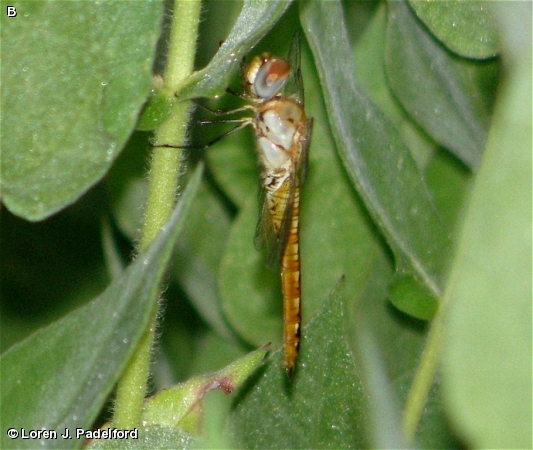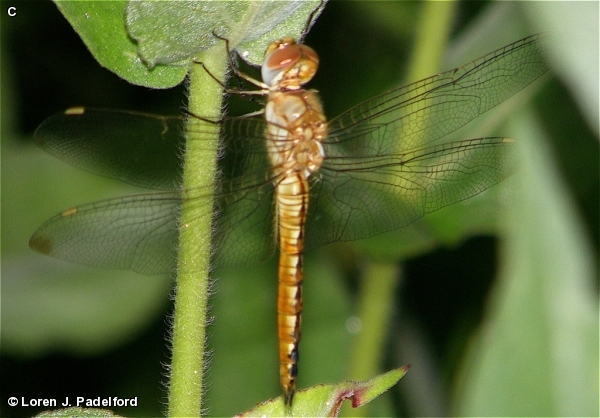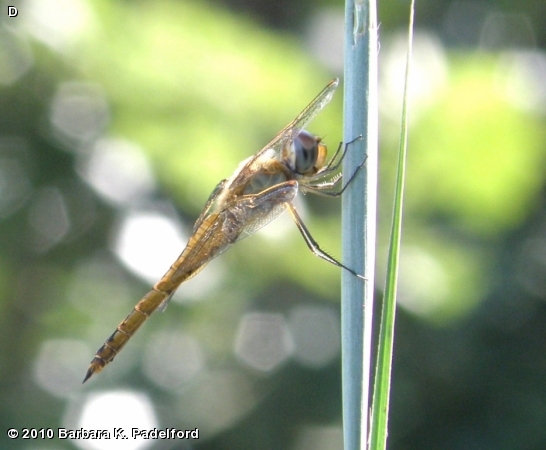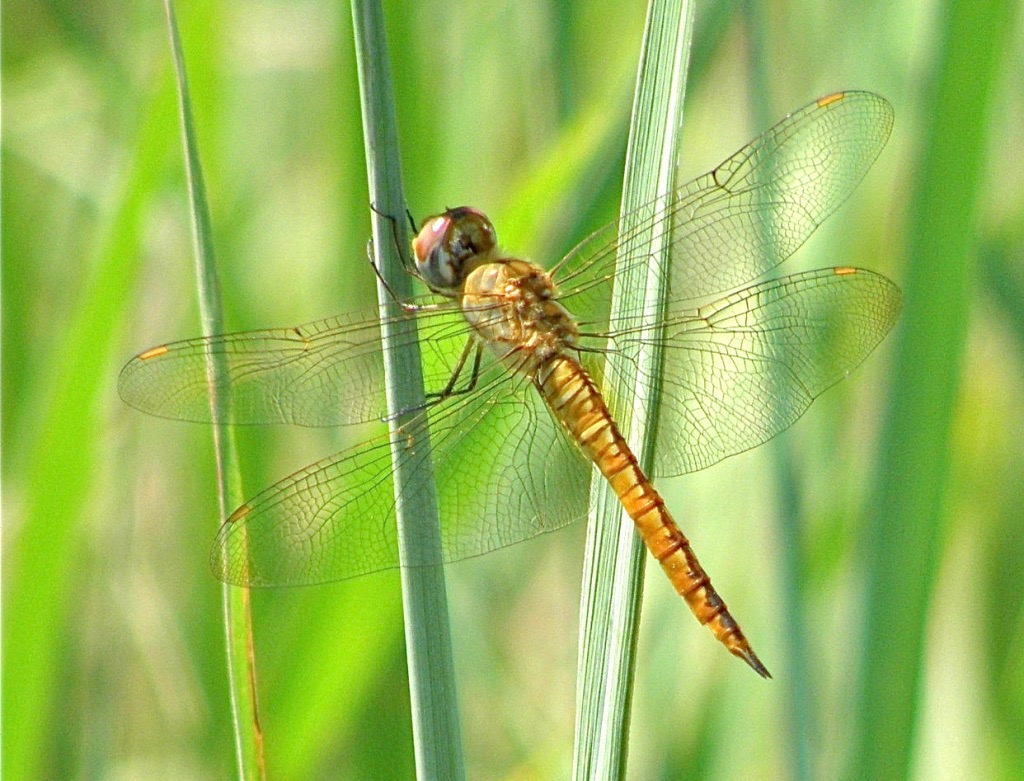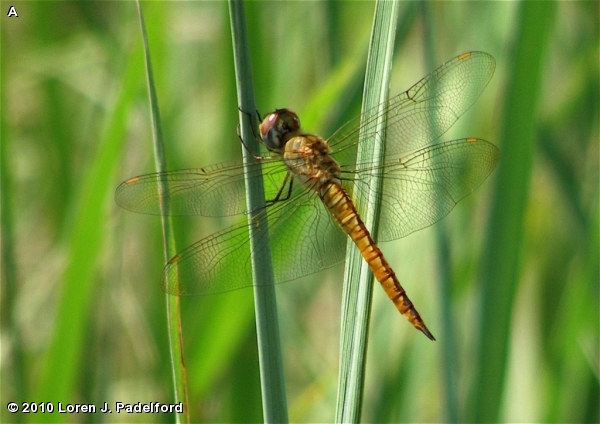
This large-winged dragonfly is about 2 inches or 50 mm in length. The eyes are reddish and the face is cream-colored. The thorax is cream to yellow. The abdomen is a gold to orange color with a brown median line down the center ending with 2 black spots near the tip. The wings are clear with a smoky tip on each wing and tan stigmas. This species is very similar in appearance to the Spot-winged Glider (P. hymenaea) but its abdomen is lighter in color and less mottled, and lacks the dark spot at the base of the hindwings.
The Wandering Glilders and Spot-winged Gliders show up in our area shortly after summer rains and can be common in wet summers. They breed in temporary puddles and pools and newly filled, shallow wetlands without fish. The Gliders are strong fliers and are usually not seen perching. They can be seen feeding in swarms with other gliders.
When at rest they perch vertically and low in weeds or grass. The females usually lay eggs in tandem with the male by tapping their abdomens on the water surface while flying or hovering. She can lay up to 800 eggs during a single mating. The larvae develop faster than other skimmers which enables them to live in temporary pools. Their use of temporal water pools accounts for the dragonflies in the genus Pantala being known as Rainpool Gliders. Their very broad wings and the ability to store fat for energy allows them to make long migratory flights. The Wandering Glider is found on every continent except Europe and Antarctica.
Disclaimer: The content of NatureSearch is provided by dedicated volunteer Naturalists of Fontenelle Forest who strive to provide the most accurate information available. Contributors of the images retain their copyrights. The point of contact for this page is: Babs Padelford.

